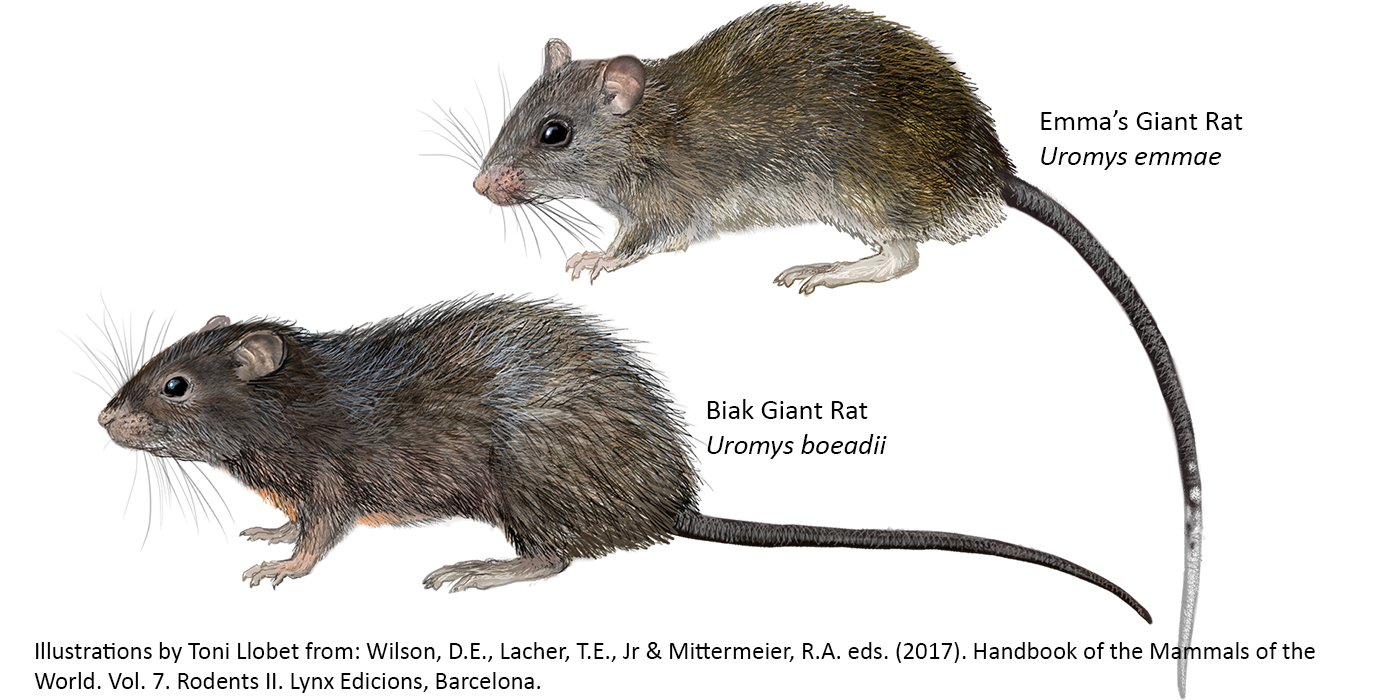Happy Lunar New Year!
In the Chinese zodiac cycle, 2020 is the Year of the Rat. The rat represents wealth and abundance, primarily due to rats’ amazing ability to multiply their populations by rapid production of many offspring. Unfortunately, not all species of rats are blessed with the gift of abundance.
To many people, rats are pests, associated with back alleys and dustbins. But rats are actually the mammal group which is most rich in species. Most are not pests at all, but forest-dwelling species that do not interfere with people’s health, crops, stored food or any other aspect.
Southeast Asia is home to many species of forest rats. Two of them, Emma’s Giant Rat Uromys emmae and Biak Giant Rat Uromys boeadii, are listed by the IUCN Red List of Threatened Species as Critically Endangered – the last category of the Red List before Extinct (or Extinct in the Wild if some are held in captivity). They are therefore considered ASAP species. There have been no recorded records of these two rats for many decades; the Biak Giant Rat was collected just once in 1963 and has not been recorded by any means since.

There are of course other species that have not been found for just as long, if not longer. A long period since the last record is, on its own, not a reason for being listed as Critically Endangered. A lack of records could mean a number of things. One of which is that there has not been enough time spent searching and surveying. Simply no one has looked, and therefore no one has found.
Rosalind Kennerley, Programme Officer for the IUCN SSC Small Mammal Specialist Group (SMSG), says, “Emma’s Giant Rat has not been since its discovery in 1946, which is not an unusual situation for small mammals. Within the SMSG we have a long list of species which haven’t been observed or recorded for many years, in particular across Southeast Asia where species are endemic to islands, where researchers do not often visit. In some cases, like this one, they are only known from the original collection of the holotype specimen. Assessing the conservation status for these species can be extremely difficult, as there is such little information about the animals themselves and often the threats to their habitats.”
In the case of the two ASAP species, a number of recent survey efforts have unfortunately been unsuccessful, leading to the conclusion that they are now indeed very rare, if indeed they survive at all. Searches, however, have not been intensive enough to suggest conclusively that either species is yet extinct.
Both ASAP rat species are thought to exist only on small islands in Indonesia. With such a small geographic range, pressures that may not pose a threat to other species can become a major issue. Hunting, for example, can have devastating impacts for species limited to such a small area. The Biak Giant Rat has been a victim of local consumption, and the area of forest where it was found back in 1963 has since been deforested. Concerns are high enough for the two species to be listed as Critically Endangered.
Hunting and habitat loss are not the only threats facing these giant rats. For species which have made their home on just one island, climate change might be a particularly big threat. Not only is there the risk of sea levels rising, but also their forest home will undoubtedly change as micro-climates shift. In addition, invasive species pose a relatively unknown, but potentially huge, threat to Southeast Asia’s giant rats.
Of course, these threats are not unique to ASAP rats. Rodents with bigger ranges are often victims of the same pressures, as indeed are many other Southeast Asian species and the forest in general. But the larger a species’ range, the more likely that they can find refuge from the threats.
As the world enters the Year of the Rat, it is important not to be complacent about the conservation status of Southeast Asia’s rats, simply because only two of them are currently listed as Critically Endangered. Instead, we must use that as incentive to change our perception of these forest-dwelling rodents, and protect other species from the same fate.

